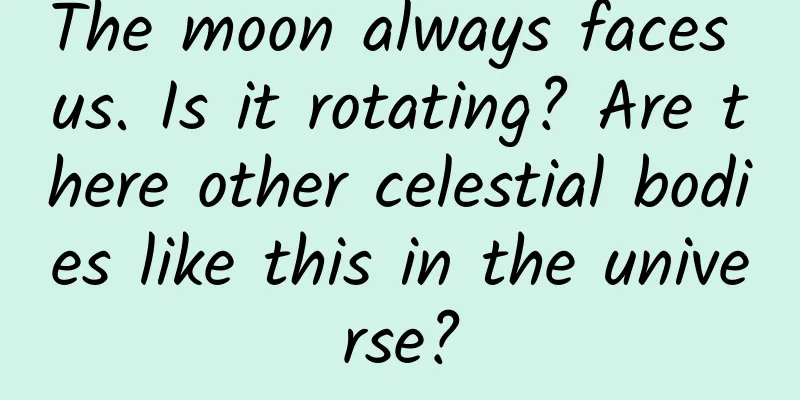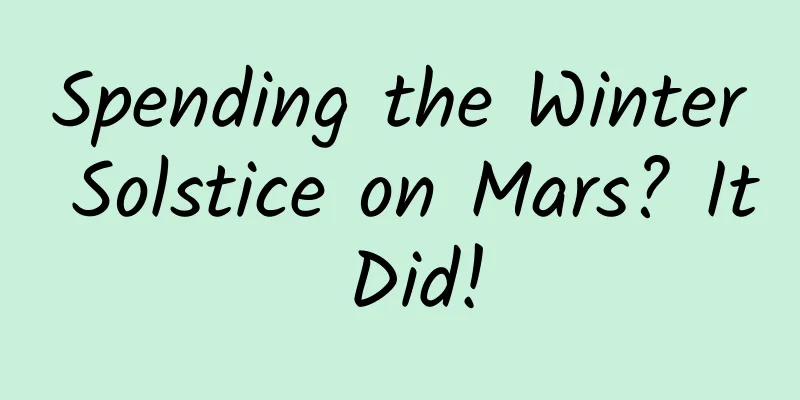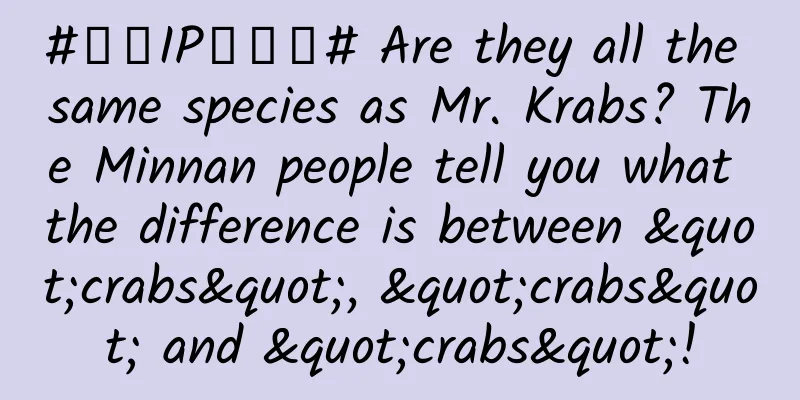The moon always faces us. Is it rotating? Are there other celestial bodies like this in the universe?

|
This is a question that many people are puzzled about. We see the same side of the moon every day, and all celestial bodies rotate, so why is the moon so "stubborn" that it just doesn't rotate? In fact, there are two misunderstandings about this question: one is that the moon is not non-rotating, it just rotates slowly; the second is that there are many celestial bodies in space that rotate in the same way as the moon, and this "stubbornness" is not unique to the moon. The rotation of the moon is called tidal locking What is tidal locking? It means that due to the gravitational force between celestial bodies, their rotation will be affected by each other. In the range of gravitational interaction, in addition to the gravitational influence of two celestial bodies, there is also the influence of tidal force. Gravity and tidal force are generally gravitational effects, but there are some differences. Gravity refers to the force between two celestial bodies as a whole, and tidal force is a certain effect formed by the different forces of gravity at different positions of celestial bodies. The law of universal gravitation can be expressed by the following formula: F=GMm/R^2. This formula means that the value of gravity F is proportional to the product of the gravitational constant G and the masses of the two celestial bodies M and m, and inversely proportional to the square of the distance R between M and m. However, this total gravitational force only explains the overall interaction between two celestial bodies and is a formula for calculating the overall gravitational force. When gravitation acts on a celestial body, the force distribution in different parts of the celestial body is uneven. According to the law that the gravitational force is inversely proportional to the square of the distance, the gravitational force is the largest where the surfaces of celestial bodies are closest to each other, and as the distance increases, the gravitational force will decay rapidly, which will form uneven pulling forces on different parts of the celestial body, and as the celestial body rotates, it will form squeezing and kneading forces. This effect will distort the surface of celestial bodies, and the most obvious one is fluids. The ocean tides formed on our earth are mainly caused by the tidal force between the earth, the sun and the moon. Tidal force not only affects fluids, but also causes deformation and distortion of rigid bodies such as rocks. It's just that the deformation is smaller and difficult to see with the naked eye. As a result of the long-term effect of this tidal force, the rotation of celestial bodies will become slower and slower. Eventually, in the mutual gravitational relationship, the smaller celestial body will be tidally locked first, that is, one side will always face the larger celestial body and it will appear to be not rotating. When the moon and the earth first formed a master-satellite relationship (the earth was the master planet and the moon was the satellite of the earth), the moon's rotation was relatively fast. After perhaps hundreds of millions of years of tidal pull, it gradually became what it is today. In fact, the moon is still rotating. The so-called tidal locking means that the revolution and rotation are synchronized, but it does not mean that there is no rotation. The moon always faces the earth, but it does not seem to rotate to people on earth. However, if you look at the complete earth-moon system in space far away from the earth, you will find that the moon is still rotating, but it is synchronized with the revolution and rotates very slowly. The moon's revolution period is 27.32 days, that is, it takes 27.32 days to revolve around the earth. It seems that the moon always faces the earth, but in fact, while it revolves around the earth, it also rotates once. This is the synchronization of rotation and revolution. If it does not rotate while revolving, we will see a different moon on the earth, as described on the right side of the picture above. Many moons in the solar system are tidally locked There are 8 planets in the solar system, of which 4 are terrestrial planets, which are like our Earth, surrounded by a layer of rock, with high density and hardness. They are Mercury, Venus, Mars and Earth. Currently, neither Mercury nor Venus has been found to have satellites. Earth has one satellite, the Moon, and Mars has two satellites, Phobos and Deimos. In addition to the four terrestrial planets, there are four gas planets or Jovian planets. The characteristics of these planets are that they are large, with large mass and volume. The smallest Uranus has a mass of 14.5 times that of the Earth, and the largest Jupiter has a mass of 318 times that of the Earth. These giant planets have many satellites, including 79 for Jupiter, 82 for Saturn, 27 for Uranus, and 14 for Neptune. Many of these satellites are tidally locked to their host stars, just like the moon. There are 32 known tidally locked satellites of the major planets, including 2 on Mars, 8 on Jupiter, 15 on Saturn, 5 on Uranus, and 2 on Neptune. These locked satellites always face their host stars, looking very loyal. But to achieve this, they must rotate once on their own while orbiting once, otherwise they will not be able to show their loyalty all the time. In theory, all celestial bodies will eventually become tidally locked. Some people believe that the long rotation periods of Mercury and Venus, Mercury's 58.5 Earth days and Venus's 243 Earth days, are close to their orbital periods, and Venus's is even longer than its orbital period. This is due to the gravitational locking of the sun. However, this statement is controversial. People believe that the current rotation and revolution speeds of the planets and the different inclination angles of their rotation axes are due to complex factors and are related to some celestial events in the early and later formation of the solar system. But the rotation of all the planets is slowing down, which means that the gravitational tides of the sun are exerting an influence on the planets, making the planets tend to be tidally locked. At the same time, the sun is also dragged down by the gravity of the planets and tends to be locked. Studies have shown that 600 million years ago, the Earth only needed 22 hours to rotate once, but now it takes 24 hours. Based on this change, we can calculate that the rotation period will slow down by 0.012 milliseconds every year. If this trend continues to slow down linearly, in 1 billion years, the Earth's rotation will slow down by 12,000 seconds, so a day and night will take 27.33 hours; and in 5 billion years, the rotation will be extended by 60,000 seconds, and each day and night will be 36.67 hours. The life span of our solar system is only about 5 billion years, which means that when the universe is destroyed, the Earth will not be tidally locked to the Sun. Therefore, although all planets and stars have a tendency to be gravitationally tidally locked, they may not actually be locked during their lifetime. That’s it, welcome to discuss, thanks for reading. The copyright of Space-Time Communication is original. Infringement and plagiarism are unethical behavior. Please understand and cooperate. |
<<: Spicy kiwi? More weird flavors
Recommend
What pots and containers can be used to bake delicious sweet potatoes?
Imagine that when we get off work and walk out of...
Google's Utopia: Which World Does the Future Belong to?
Recently, there were rumors that Google would ret...
Xiaohongshu operation and promotion, Xiaohongshu grass-growing strategy!
1 Xiaohongshu was founded on June 6, 2013. It was...
Hammer T2 detailed parameters announced: main camera parameters revealed
Smartisan Technology has announced that it will o...
7 essential skills for operations - marketing promotion steps!
A correct marketing promotion process Marketing pr...
Can you spend one dollar in channel fees as if it were eight dollars? Let's look at the Six Meridians Divine Sword
What changes have taken place in the way communic...
New version of mobile QQ released! This is the first update after the Ministry of Industry and Information Technology took transitional administrative guidance on Tencent
According to data from major app stores, Tencent ...
If Beijing Hyundai doesn’t launch electric vehicles, will it be forced to withdraw from China?
According to Seoul Economic Daily, Hyundai Motor’...
What is Affiliate Marketing?
What is Affiliate Marketing Affiliate marketing i...
Public account basic operation tutorial_E guest_HD no watermark
Course Schedule Section 1: Registration Section 1...
User experience report: It’s not easy to say I love you, Apple Pay binding failed
I was surprised to hear that ApplePay has officia...
This rare water bird can even bring its own "spoon" to eat?
Recently, the monitoring team of Hubei Shennongji...
Mother River Protection Day | Protect the "health" of the Yangtze and Yellow Rivers and look at China's "remedies"
For thousands of years, the surging Yellow River ...
When will household solar power generation say goodbye to “polarization”?
Recently, there have been frequent news reports o...
3 key points for optimizing Google advertising!
The quality score of your ads plays a very import...









